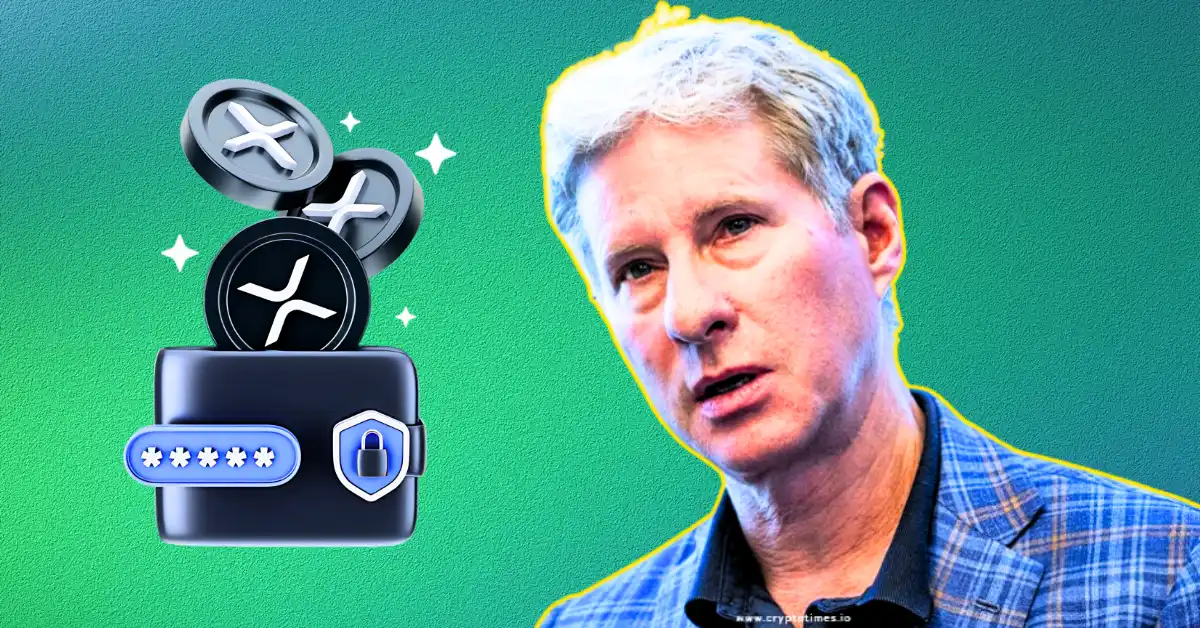The narrative surrounding XRP, a prominent cryptocurrency co-founded by Chris Larsen, often frames it as a strategic evolution from Bitcoin. This perspective is not merely promotional rhetoric but reflects XRP’s foundational goals and design principles, which emphasize speed, efficiency, and scalability, aiming to address Bitcoin’s limitations while fostering broader financial utility.
Origins and Vision: Crafting a Better Bitcoin
XRP’s inception traces back to a desire by Chris Larsen and a team of experts to create a digital asset and network that would surpass Bitcoin’s technological and operational constraints. Bitcoin, while revolutionary as the first decentralized cryptocurrency, is often criticized for its energy-intensive proof-of-work mechanism and slow transaction speeds. Larsen and Ripple Labs envisioned XRP as a solution that would use less energy, process transactions faster, and offer greater utility in everyday financial interactions.
The XRP Ledger leverages a consensus protocol distinct from Bitcoin’s mining system. It achieves transaction finality within seconds, contrasting sharply with Bitcoin’s average confirmation times spanning several minutes to even hours under congested network conditions. This rapid settlement capability underpins XRP’s proposition as a payment and remittance tool, facilitating near-instant and cost-effective cross-border transactions.
Technical and Economic Advantages Over Bitcoin
Energy Efficiency: One of the principal critiques of Bitcoin is its substantial environmental footprint, mainly due to the proof-of-work protocol. XRP’s consensus mechanism, by contrast, requires no mining and thus consumes significantly less power. This aspect has gained importance as environmental concerns increasingly influence technology adoption, positioning XRP as a greener alternative.
Transaction Speed and Cost: XRP transactions typically settle within 3 to 5 seconds, while Bitcoin can take 10 minutes or longer. Lower fees are another key advantage—Bitcoin transaction costs can balloon during periods of high network activity, while XRP maintains relatively stable and minimal fees. These factors make XRP more practical for financial institutions and consumers needing efficient, small-value transfers worldwide.
Scalability: XRP’s ledger supports a higher throughput—processing around 1,500 transactions per second (TPS)—compared to Bitcoin’s approximate 7 TPS. This scalability is crucial for mass adoption in real-time global financial systems, where volume and speed are critical.
Chris Larsen’s Position on XRP’s Role Relative to Bitcoin
Larsen has publicly described XRP as a “better version of Bitcoin,” underscoring that XRP was designed with the lessons from Bitcoin’s early years in mind. He highlights XRP’s potential not to replace Bitcoin as a digital store of value, but rather to serve as an efficient transactional currency particularly suited for financial intermediation and cross-border payments.
He predicts XRP’s value could surge dramatically if Ripple captures a significant share of global payment traffic, such as 10% of SWIFT’s volume. This projection is tied to XRP’s intended use cases rather than mere speculative demand. The XRP ecosystem thus contends that blending technology superiority with established financial sector integration differentiates it from Bitcoin’s primarily decentralized and store-of-value orientation.
The Ripple Effect: Community, Trust, and Financial Innovation
Beyond technology, Ripple and its XRP supporters emphasize trust and institutional relationships as paramount. Larsen often stresses that trust in the network and its participants supersedes raw technical innovation when it comes to real-world financial adoption. Ripple’s ongoing efforts to partner with banks, payment providers, and regulatory bodies illustrate this pragmatic approach.
The XRP community, characterized by active engagement and loyalty, fuels advocacy and adoption drives. Their enthusiasm reflects confidence in XRP’s mission to streamline global remittances, reduce transaction friction, and expand financial inclusivity.
Challenges and Criticisms
Despite its compelling attributes, XRP has faced hurdles, including legal challenges like the SEC lawsuit alleging unregistered securities offerings. Such issues have at times cast doubt on XRP’s legitimacy and complicated institutional participation. Moreover, critics argue that XRP’s level of centralization, due to Ripple Labs’ holdings and governance role, contrasts with Bitcoin’s decentralized ethos, raising philosophical and risk considerations.
Additionally, while XRP innovates on many fronts, Bitcoin’s entrenched first-mover advantage as “digital gold” and widespread network security continue to sustain its dominant market position, particularly among investors seeking a reliable store of value.
Conclusion: XRP’s Distinctive Path in the Cryptocurrency Landscape
XRP’s design philosophy and operational achievements establish it as a purposeful “better Bitcoin” in terms of transaction speed, cost-efficiency, and ecological impact. Chris Larsen’s vision highlights that while Bitcoin catalyzed the cryptocurrency revolution, XRP aims to mature and adapt digital currencies into viable everyday financial tools.
This evolution from foundational innovation to practical utility represents a critical chapter in the broader digital asset ecosystem. XRP’s future will likely be shaped by its ability to navigate regulatory environments, deepen institutional ties, and maintain a dynamic, trusted community — factors that might ultimately determine whether it transcends Bitcoin’s legacy or remains a complementary counterpart in the evolving blockchain story.





